Search
Search Results
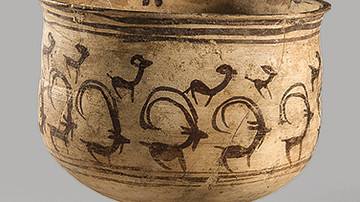
Image
Terracotta Goblet with Gazelles and Ibexes from Shahr-e Sukhteh, Iran
Terracotta goblet with gazelles and ibexes, found in grave no. 725 in Shahr-e Sukhteh, southern Iran, Early Bronze Age, c. 2800-2400 BCE. National Museum of Iran, Tehran, acc. no. 12947. Photo by Nima Fakoorzadeh (Baloot Noghrei...
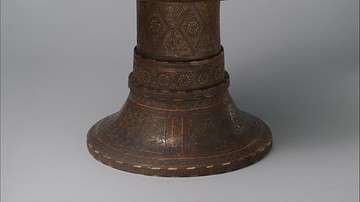
Definition
Khatam
Khatam is a decoration technique used exclusively on wooden objects and one of Iran's finest and most delicate crafts consisting of geometrical patterns. Small squares or triangles are laid next to one another in different compositions, colors...
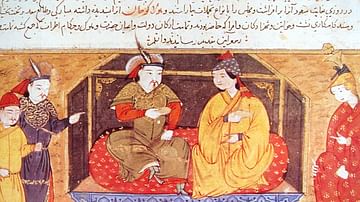
Definition
Ilkhanate
The Ilkhanate (or Ilqanate, 1260-1335 CE) was that part of the Mongol Empire (1206-1368 CE) which mostly covered what is today Iran and parts of Turkmenistan, Turkey, Iraq, Armenia, Afghanistan, and Pakistan. Established by the Mongol general...
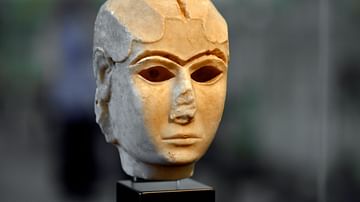
Article
The Iraq Museum & Three Wars: Three Steps from Hell
This article documents and elaborates on the many critical behind-the-scenes events, unknown to the public, before the history leaves us. The author The bulk of the “the land between the two rivers” lies in what we call today the...
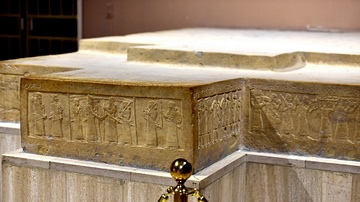
Image
Throne Dais of Shlamaneser III at the Iraq Museum
This dais was found in the eastern end of the throne room (T1) at Fort Shalmaneser in the city of Nimrud (in modern-day Nineveh Governorate, Iraq) in 1962 CE. The upper surface is decorated with geometrical floral motifs and inscribed with...
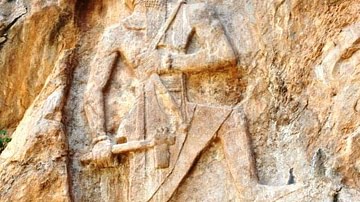
Image
Naram-Sin Rock Relief, Sulaimaniya, Iraq
A rock relief depicting the victory of the Akkadian king Naram Sin after defeating Lulubis, tribes who came from the Zagros mountains west of Iran. The relief was made on the surface of a mountain cliff, modern Qopi Qoshk, Qaradagh's mountains...
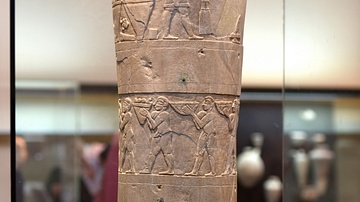
Image
The Warka Vase
The Vase of Warka (also called Uruk Vase) is one of the earliest surviving examples of narrative art. It was excavated (in fragments) by a German excavation team in a temple complex dedicated to the goddess Inanna at the city of Uruk (in...
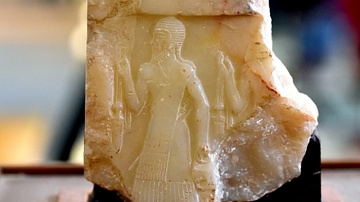
Image
Akkadian Soldier on Naram-Sin Victory Stele from Wasit
This alabaster stele (with different registers) was fragmented when originally found and only three fragments have survived; two are in the Iraq Museum in Baghdad and one is in the Museum of Fine Arts, Boston, USA. The stele commemorates...
![Offering Scene, Warka Vase [Top Register]](https://www.worldhistory.org/img/c/p/360x202/10594.jpg?v=1618594218)
Image
Offering Scene, Warka Vase [Top Register]
The votive or sacred Warka Vase is decorated with three horizontal registers and shows signs of repair in antiquity. The top register depicts a complete scene. Here, a collection of votive offerings (animals, fruits, and grains) are being...
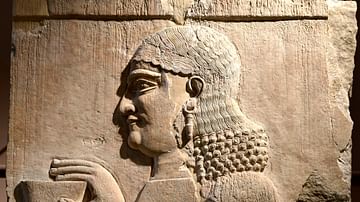
Article
The Iraq Museum: A Brightness in the Darkness
For whom have I labored? For whom have I journeyed? For whom have I suffered? I have gained absolutely nothing for myself, I have only profited the snake, the ground lion! The Epic of Gilgamesh, Tablet XI This is how...